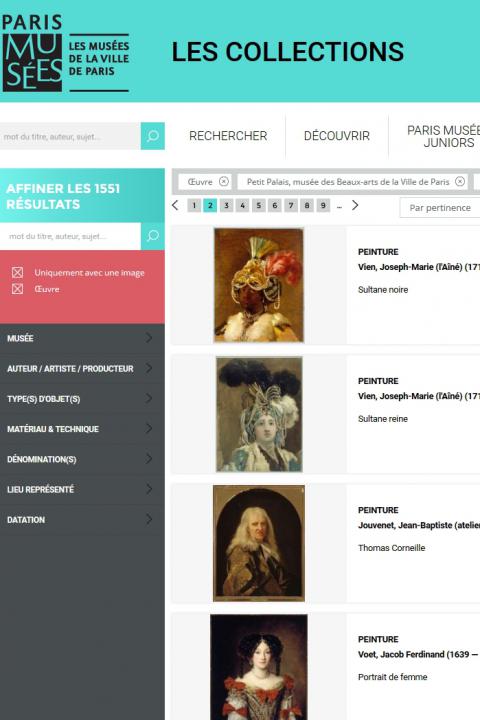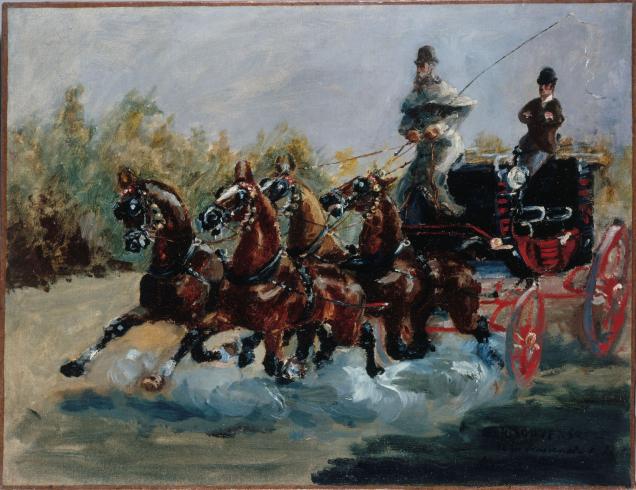Toulouse Lautrec painted this promenade scene in 1880 when he was only 17, the year in which he chose to become an artist and went to study art in Paris.
The figure of the driver of this carriage galloping at full speed down the Promenade des Anglais is considered to be an evocation of the artist’s father.
The red and black car is a big hunting brake driven by Count Alphonse de Toulouse-Lautrec accompanied by a groom sitting on a raised back seat.The momentum of the horses runs along a diagonal line that carries the movement towards the front of the painting. The Count was a keen hippologist. He was one of the last aristocrats to practice falconry on horseback.
His son Henri went on his first apprenticeship with the animal painter René Princeteau (1843-1914), who specialised in equestrian subjects painted with brisk brushstrokes. While studying with this master the young pupil cultivated this agile brush technique which conveys so well the sensation of speed and lightness that characterises his style. Before painting the portraits of Paris’s café-concerts and brothels, Toulouse-Lautrec mainly drew horses. The teenager then carried out a number of studies of galloping horse-drawn carriages in Chantilly, Auteuil and Nice, inspired by English engravings and the lithographs of Dreux.
I.C.

City of Paris municipal collection's website
The collections portal can be used to search the collections of Paris’s 14 municipal museums (approximately 336,000 works, including 43,000 belonging to the Petit Palais).
It is also possible to download around 12,000 images of the museum’s works free of charge.
Access the Museums of the City of Paris collections portal
Extern databases
Discover a selection of databases online presenting works from the Petit Palais or documents concerning the history of the museum.

